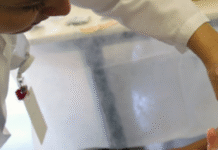New Delhi– The cardiac screening tools widely used today may be overlooking almost half of the people who are actually at risk of suffering a heart attack, according to a new study by researchers at the Mount Sinai Health System in the United States.
The study, published in JACC: Advances, found that relying solely on current risk calculators and symptom-based assessments leaves a major gap in prevention.
“Our research shows that population-based risk tools often fail to reflect the true risk for many individual patients,” said corresponding author Amir Ahmadi, Clinical Associate Professor of Medicine (Cardiology) at the Icahn School of Medicine at Mount Sinai.
Ahmadi noted that had these patients been assessed as little as two days before their cardiac event, “nearly half would not have been recommended for further testing or preventive therapy guided by current risk estimate scores and guidelines.”
Researchers analyzed data from 474 patients under age 66 with no known coronary artery disease. The goal was to assess how accurately the commonly used atherosclerotic cardiovascular disease (ASCVD) risk score — and a newer, more comprehensive tool known as PREVENT — could identify individuals at risk before their first heart attack.
The findings were stark. Nearly half of the patients would have been categorized as low or borderline risk under ASCVD, meaning they would not have been advised to start preventive therapy. Under PREVENT, the failure rate exceeded 60 percent.
Overall, 45 percent of the patients would not have been recommended for preventive treatment or diagnostic imaging under ASCVD guidelines, and 61 percent under PREVENT.
The research also found that most patients — about 60 percent — did not experience classic symptoms such as chest pain or shortness of breath until less than two days before their event, suggesting symptoms appear too late to meaningfully alter care.
Ahmadi argued that instead of treating symptoms and scores as the first line of defense, cardiac care needs to shift toward early imaging capable of detecting plaque buildup long before it ruptures. (Source: IANS)












